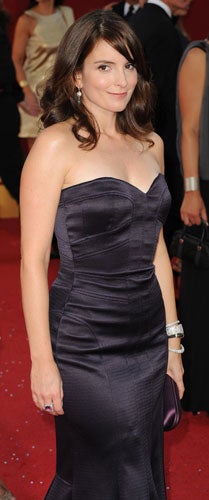Thomas Sutcliffe: Noses pressed against the glass
The week in culture

I think I have spotted a trope in the making – or, rather, cultural evolution being a complicated kind of affair, I have spotted one kind of trope morphing into another. The nudge for this notion was the opening sequence of the Coen brothers' new film, Burn After Reading, which begins with an image of the space-suspended globe and then puts the camera lens into free-fall, descending through outer atmosphere and cloud cover until Chesapeake Bay and the estuary of the Potomac appear, and then dropping still further until we're homed in on the rooftops of the CIA headquarters at Langley. This motion – with its sky-diving thrill of growing resolution and targeted aim – will be familiar to most members of the audience as exactly what happens when you go on Google Earth, and roll the scroll wheel to take you from a high-earth orbit to peer from just a few hundred feet at your own rooftop. If you haven't got Google Earth loaded then Google Maps will do much the same thing for virtually every inhabited portion of the globe, from Antananarivo to Zeeland. You just have to click the "Satellite" tag in the top right-hand corner and a kind of Faustian omniscience is yours.
Limited omniscience, naturally, which is why the same progression works so effectively when it features in Joseph O'Neill's recent novel Netherland. The narrator, separated from his wife and son by marital discord and the Atlantic Ocean, consoles himself at night with internet flights across the ocean, homing in on Landford Road in Putney, until he can see his son's dormer window and the family car, a red BMW. "But there was no way to see more, or deeper. I was stuck," he concludes – the old cliché of pressing your nose against the shop window effectively remade with a technology that's only a few years old. Just down there is everything he longs for, but he can't land.
Satellites themselves aren't new, of course, or the space travel that made them possible. And the impact of the first pictures of earth from outside the planet is now well known. In his new book Earthrise, Robert Poole claims that one of those photographs became the single most-reproduced image ever, a picture credited with ushering a huge mental shift in our attitude to our own planet. Satellite surveillance images have also long been a stock in trade for thrillers and spy movies (and Burn After Reading is a comically undercutting spy thriller). But the Google Earth version does something subtly different. It isn't about extraneous power, sitting over our heads and with the power to see all we do. It's about us – and a world in which, if I want to see the house in New Zealand where I spent two years from the age of eight, I can. The resolution is a bit fuzzy here and there, but Google recently launched its own satellite, so in time the tiles will be updated and even more of the world will come into focus – a world you can tug here and there with the grasp of a little pixellated hand.
I suspect that this, too, will have its effects on how we view the world, even if the change isn't as grandiose as the ecological tenderness ushered in by those first images of Earth hanging in darkness, as bright as a soap bubble. When it comes, it will have something to do with the zoom, the way in which the intimately local – that washing line that was out when the satellite swung over one clear, sunny evening – gives way to the blur of towns and then the lichen-patchwork of whole regions on a scale that doesn't acknowledge our existence at all. As O'Neill puts it: "From up here... a human's movement is a barely intelligible thing... There is no sign of nations, no sense of the work of man".
Kay, Fey and the key to satire
Watching Peter Kay's Britain's Got the Pop Factor... last week (Channel 4's highest-rating programme of the year) raised a philosophical question that had first occurred while watching Tina Fey do Sarah Palin. If a satire exactly replicates what it satirises, does it really count as satire any more?
Kay's spoof was so doggedly faithful to its model (and so determined not to take you backstage, where much of the richest comic material lay undisturbed) that it rather lost its biting edge – particularly when it was interrupted by trails for Alan Carr's Celebrity Ding Dong, which suggested that Channel 4 can perfectly satisfactorily spoof itself, without Kay's help.
Fey has a better defence, I think, for the way in which her routine gets its biggest laughs with lines that were actually used by Palin in earnest, rather than written by Saturday Night Live scriptwriters. The satire lies in the implication that America's best satirists haven't been able to come up with anything more ridiculous.
Renaissance faces
The National Gallery's new exhibition Renaissance Faces includes a lot of very great paintings and one charming bit of kitsch. Bit harsh, that, as a description of Guido Mazzoni's bust of a laughing boy (possibly a portrait of Henry VIII as a child), but it's what we tend to feel when we see coloured statuary. It's a beguiling thing, though, with a distinctive kind of presence that couldn't be matched by a two-dimensional portrait. It made me think it's time for some Russian oligarch to revitalise the art of the polychrome portrait bust.

Join our commenting forum
Join thought-provoking conversations, follow other Independent readers and see their replies